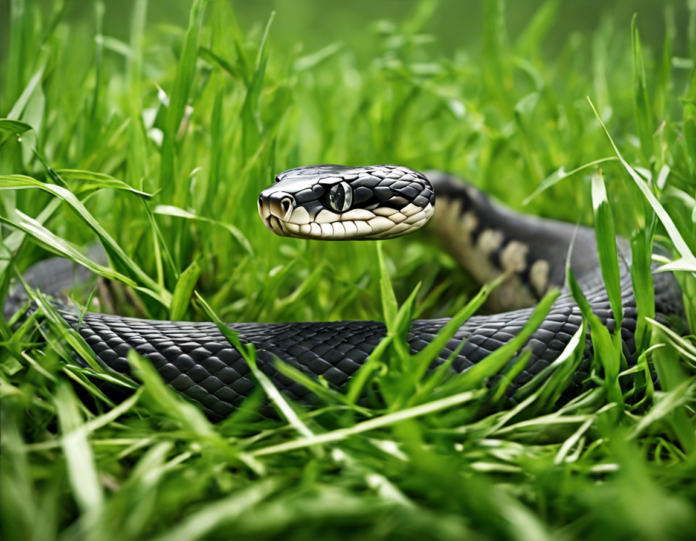At some point in time, we've all heard the saying "a snake in the grass." This phrase is often used to describe a person or situation that is dishonest, deceptive, or untrustworthy, much like a hidden danger waiting to strike. But what is the true meaning behind this idiom, and why do snakes specifically hold such negative connotations in this context?
The Symbolism of Snakes
Throughout history, snakes have been powerful symbols in various cultures and mythologies. In many ancient civilizations, snakes were associated with knowledge, transformation, and renewal. The shedding of their skin represented a form of regeneration and rebirth. However, this duality of symbolism also gave rise to the association of snakes with deceit, cunning, and danger.
In Christianity, for example, the serpent in the Garden of Eden is often interpreted as a symbol of temptation and evil. It is the snake that tempts Eve to eat the forbidden fruit, leading to the fall of humanity. This biblical narrative has contributed significantly to the negative perception of snakes as cunning and deceitful creatures.
The Metaphor of a Snake in the Grass
When we refer to someone as a snake in the grass, we are drawing on the image of a hidden danger lurking unseen. This individual may appear harmless or even friendly on the surface, but underneath lies a treacherous nature waiting to betray or harm others. The metaphor highlights the idea of deception and betrayal, as well as the threat posed by those who conceal their true intentions.
Just as a snake coils in the grass, waiting to strike at its unsuspecting prey, a person described as a snake in the grass operates in a covert manner, biding their time until the opportune moment to cause harm or chaos. This imagery evokes feelings of unease and wariness, as it underscores the idea that not all dangers are immediately visible or apparent.
Identifying the Snakes in Our Midst
In our daily lives, we may encounter individuals who exhibit snake-like behaviors. These can manifest in various forms, such as:
- Manipulation: Snakes in human form may use manipulation and deceit to achieve their goals, often at the expense of others.
- Betrayal: They may feign loyalty and trustworthiness, only to betray those who have placed their faith in them.
- Dishonesty: Concealing their true intentions and feelings, these individuals may weave elaborate lies to further their agendas.
- Toxicity: Like venom coursing through veins, the presence of a snake in the grass can poison relationships and environments.
Recognizing these traits in others can help us navigate social interactions more effectively and protect ourselves from potential harm. It is essential to remain vigilant and attuned to any red flags that may indicate someone is not as they appear.
Dealing with Snakes: Setting Boundaries and Moving Forward
When confronted with a snake in the grass, it is crucial to take proactive steps to protect yourself and maintain your well-being. Here are some strategies for dealing with deceptive individuals:
Setting Boundaries
- Establish clear boundaries: Communicate your limits and expectations clearly to prevent exploitation or manipulation.
- Trust your instincts: If someone's behavior raises suspicions, trust your gut feelings and investigate further.
- Maintain a healthy skepticism: While it's essential to give others the benefit of the doubt, remain cautious of inconsistencies or warning signs.
Moving Forward
- Seek support: Confide in trusted friends or family members about your concerns and seek their perspective on the situation.
- Confront the issue: If comfortable and safe to do so, address the behavior directly with the individual to gain clarity and potentially resolve misunderstandings.
- Detach if necessary: In cases where the snake in the grass poses a significant threat to your well-being, consider distancing yourself from the individual to protect yourself from harm.
Frequently Asked Questions (FAQs)
1. What are some warning signs of a snake in the grass?
Common warning signs include inconsistency in behavior, manipulation tactics, a lack of transparency, and a history of betraying trust.
2. How can I protect myself from deceptive individuals?
Developing strong personal boundaries, honing your intuition, and seeking the support of trusted confidants can help safeguard you from potential harm.
3. Are all deceptive individuals malicious like snakes?
Not necessarily. Some individuals may resort to deceit out of insecurity, fear, or past experiences. Understanding their motives can help navigate these interactions with empathy.
4. Can relationships with snakes in the grass be salvaged?
In some cases, open communication and setting clear boundaries can lead to positive changes in the relationship. However, it is essential to prioritize your well-being and safety above all else.
5. How does one rebuild trust after being betrayed by a snake in the grass?
Rebuilding trust after a betrayal takes time, effort, and a willingness to forgive. Therapy, open dialogue, and setting mutual expectations can aid in the healing process.
In conclusion, the metaphor of a snake in the grass serves as a cautionary tale about the dangers of deception and betrayal in our midst. By remaining vigilant, setting boundaries, and prioritizing our well-being, we can navigate these challenges with resilience and integrity. Remember, not all dangers are visible at first glance, so trust your instincts and proceed with caution in all your interactions.

